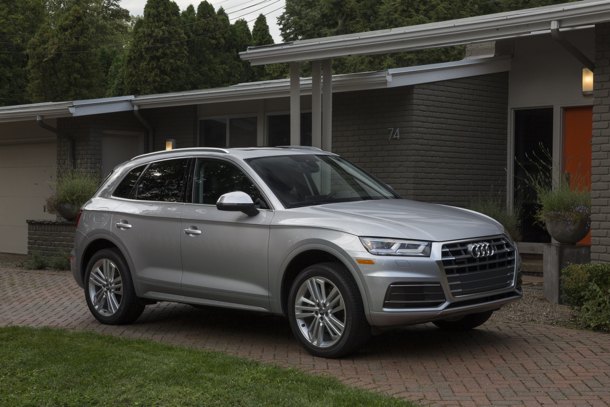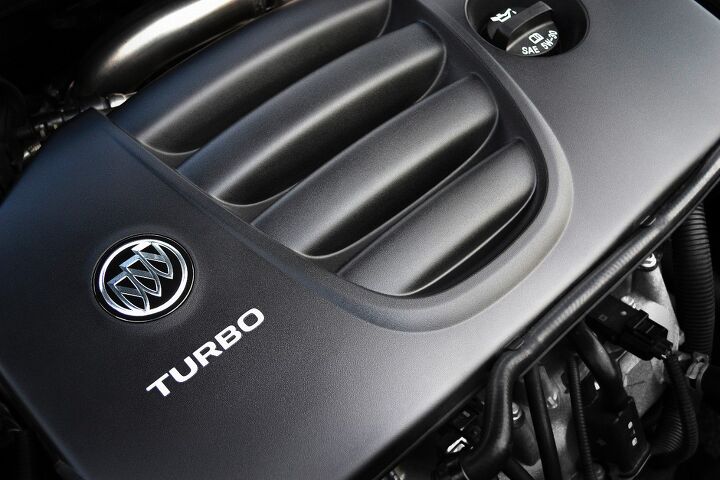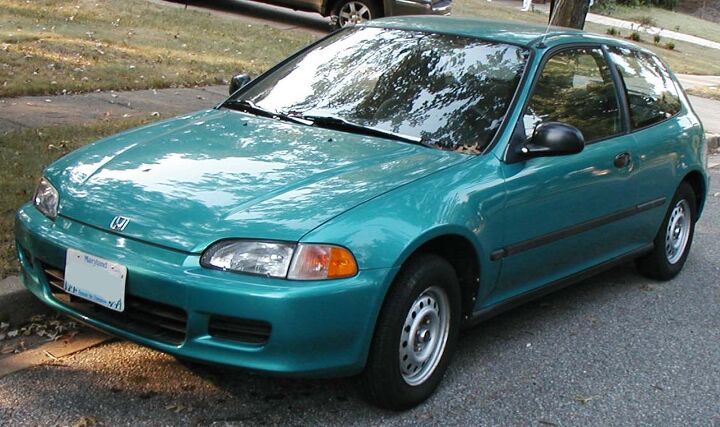#AutomotiveTrends
America's Love for Luxury SUVs Is Screwing With Off-lease Sedan Sales
North America’s love affair with SUVs and crossovers arose so suddenly and with such passion that manufacturers were left scrambling to meet demand. Luxury brands certainly aren’t exempt from this but, unlike mainstream marquis, the sudden shift in product demand has thrown those marques a bit of a curveball.
Since prestige brands tend to possess substantially higher leasing rates than their more-affordable contemporaries, luxury automakers are getting stuck with off-lease sedans that nobody seems to want. While that’s terrible news for corporate accountants, it’s good news for anyone looking for a good deal on a used Lexus ES or Audi A4.
Why Are Japanese Cars Starting to Look Different All of the Sudden?
While it’s impossible to imagine you haven’t already noticed, Japanese automakers are entering a new era of style. Disparate from each other and unabashedly novel, vehicles are beginning to crop up at trade shows and on the road that we couldn’t have seen coming a few years earlier.
Right now, the most obvious examples are from Toyota and Honda. But even Mazda, Subaru, and Mitsubishi have recently made a concerted effort to step up their styling game. The reason, according to manufacturers, is new competition.
It wasn’t all that long ago that Japan could offer a fairly dull automobile and bank on its superior quality and value to get prospective buyers to take it home. Things are different now. The quality gap is beginning to close and other manufacturers are getting better at providing most of the things that used to denote something as distinctively Japanese.
If You're Wondering Why Automakers Can't Stop Talking About Mobility, Wonder No More
“Mobility” is easily the most overused term in today’s automotive vernacular. Despite being incredibly nonspecific, executives can’t help but make it the bookend of most speeches involving long-term goals and production stratagems. But why?
The term itself pertains more to the industry itself than the specific products it’s developing. While “mobility” can be applied to any conveyance with a technological bent, the word also represents a company’s ability to move into other areas of business. And that’s what gets the investors and market analysts tugging at their collective collar, damp across the brow, so red hot they can’t help but raise the stock valuation of any company that seems poised to make a big move.
Tesla’s entry as novel manufacturer with a unique product was enough to send its share price through the roof, and established automakers took notice. Despite Mark Fields’ best attempt to rebrand Ford as a tech company, he couldn’t bottle that same lightning and paid the ultimate price — getting fired. However, General Motors may be succeeding where Ford initially failed. The proof of the pudding is how high its share prices continue to climb.
Are Two-tone Paint Jobs the Next Big Automotive Trend?
Contrasting paint hasn’t been commonplace on automobiles in over half a century, but it appears to be regaining some of its lost momentum lately. Everything from the Bugatti Chiron to the Toyota Camry offers separate bodywork hues these days.
Of course, we don’t know if this is a trend poised to explode across the industry or something that will be relegated to a handful of models before fizzling out. However, with new crossovers like the Volkswagen T-Roc, Range Rover Velar, and Volvo XC40 available with contrasting rooflines, it seems ready to enjoy at least 15 minutes of fame.
Rearview Mirrors Might Evolve in a Few Years
Rearview mirrors haven’t enjoyed the same renaissance as other portions of the automobile. When the mirrors began appearing on cars roughly a century ago, wheels had wooden or wire spokes and were wrapped in organically sourced bias-ply rubber. Despite still being round, modern wheels are vastly different from their more-venerable counterparts but mirrors are not.
That might change in a few years. While some automakers have already affixed parking camera displays into the polished reflective centerpiece, like Ford, two manufactures have recently replaced traditional mirrors will full-time video feed. Nissan has one available for the Japanese market and General Motors introduced the Gentex “Full Display Mirror™” on the Cadillac CT6 and XT5 at 2016’s Consumer Electronics trade show.
While our gut-reaction is to contemplate how much more expensive a free-hanging LCD screen would be to replace than a simple mirror, this could be the general direction for a tech-focused industry. In fact, IHS Markit is already positive it’s only a matter of time.
Brexit Seems to Have Really Screwed Up Britain's Car Market
While some of Europe saw modest auto sale gains through the first nine months of 2017, the region has mirrored North America’s decline in deliveries since the end of the summer. The United States saw eight consecutive months of declining sales this year, with a positive bump in September and better than expected volume in Canada.
Europe, meanwhile, saw the inverse. Passenger car registrations fell 2 percent year-over-year to roughly 1.43 million deliveries in September, despite August seeing a 5.6-percent improvement. Overall, 2017 has the makings of a unsatisfactory sales year for both regions. But Europe seemed to be doing alright before the U.K. suddenly stopped buying cars.
British registrations took a massive nosedive after Brexit. By September, it represented a monthly decline of 9.3 percent, compared to Germany’s 3.3 percent slide. Even though the rest of the continent saw a gain in sales, having Europe’s two largest markets lagging guaranteed the net loss.
Government Intervention is Intentionally Killing the Japanese Kei Car
Anyone with an interest in odd cars probably has at least a passing fascination with Japanese kei cars. As a member of that small subset of enthusiasts, I have a long-held fantasy that involves owning a Suzuki Alto Works, Daihatsu Mira Turbo, Honda Today, or Honda Acty. But the closest North America ever got was the i-MiEV, which Mitsubishi stretched a few inches to comply with U.S. crash ratings — nullifying its official status as a kei.
Sure, most kei cars are utter garbage from a driving perspective, but their utilitarian quirkiness and microscopic road-presence are difficult to replicate on anything other than a moped. They’re also stupidly affordable, which is one of the reasons they’ve persisted in Japan.
However, that’s beginning to change now that their home country has begun taxing them into extinction. The miniature breed, brought to life specifically so budget-minded motorists can have a vehicle and always find parking, lost roughly 25 percent of its yearly volume since Japan targeted them in 2014 — resulting in a sudden annual deficit of nearly 550,000 pint-sized vehicles.
When It Comes to Paint Preferences, Men and Women Aren't Equal: Study
While local climate plays a role, prefered automotive paint schemes largely come down to personal feelings and dealer inventory. There is also the matter of what colors are trending within the industry and, according to a recent consumer survey tabulation from iSeeCars.com, gender.
The automotive data research company compiled survey results from over 700,000 consumers and close to 30 million used car sales between 2015 and 2016 to find gender biases for specific colors. For the most part, color preferences are irrelevant. But there are a few standout shades that one group seems to prefer over the other.
Autonomous Features Are Making Everyone a Worse Driver
Autonomous vehicles are about as polarizing a subject as you could possibly bring up around a group of car enthusiasts. Plenty of gearheads get hot under the collar at the mere concept of a self-driving car. Meanwhile, automotive tech fetishists cannot wait to plant their — I’m assuming — khaki Chinos into the seat of an autonomous vehicle and enjoy a coffee without the hindrance of having to actually drive the thing to their destination.
I’ve previously discussed how autonomous cabs will become unparalleled filth-boxes, destined for salacious behavior. Because without driver oversight, why not sneeze into your hand and wipe it on the seat back? Now, surveys are beginning to indicate privately owned computer-controlled cars will be subject to similar activities — with some drivers suggesting they’ll have no qualms about having sex, drinking booze, or binge eating behind the wheel.
That’s the future we’re being promised, but a lot of autonomous features have already made it into modern production cars. Word is, they’re starting to make us terrible drivers. It’s enough to worry automakers to a point where they’re considering implementing an array of systems to more actively encourage driver involvement on a platform that’s designed to do the opposite.
Get ready to drive your self-driving car.
Boosted Engines Are Bigger Than Ever: Study
If you’re the type of automotive enthusiast who covets cylinder volume above all else, this probably hasn’t been your decade. However, if you’re of the boosted breed, things couldn’t be better. Forced induction engines are bigger than ever, not in size (again, sorry displacement fans) but in factory application.
The numbers of turbocharged vehicles sold in the U.S. rose for a sixth consecutive year in 2017, now accounting for 27.6 percent of new cars and light truck models built through March 2017. For the sake of reference, the 2011 model year only saw 10.7 percent, while previous years loitered between 4.5 and 6.6 percent annually. This makes turbocharging less of a trend and more of a revolution.
Australia Building Electric Highway Even Though Nobody There Owns An Electric Car
Australia’s Queensland Cabinet announced it would be constructing one of the longest electric highways in the world this week. The expanse of roadway already exists on the country’s eastern seaboard, but the $3 million plan intends to add an 18-station network between Gold Coast and Cairns. While EV owners might not want to hazard into the outback just yet, coastal drivers will have some peace of mind traveling between Australia’s major towns.
The fast-charging network plans to provide free power for at least a year in what the environment minister, Steven Miles, explained was a bid to increase the number of electric cars on Queensland roads.
General Motors to Turbocharge Its Engine Offerings for 2018, Literally
Rising emissions regulations are forcing many automakers to adopt forced induction across the board. While some, like Mazda and Honda, have been milking naturally aspirated engines for all their worth, even they have turned to turbochargers to do some of the heavy lifting. General Motors has more than doubled North American sales of vehicles with turbo motors — going from roughly 288,000 units in 2011 to 712,000 in 2016, 23 percent of its total volume.
GM’s powertrain lineup has changed dramatically. A decade ago, only a handful of its models came with a turbo option, while just under half of today’s fleet uses some form of forced induction. The trend is set to continue for the 2018 model year, boosting the carmaker’s share of turbocharged offerings above the 50 percent mark.
America's Hottest Up-and-Coming Car Color Isn't Teal, But It's Close Enough
We took it for granted at the time, but automakers provided us with a cornucopia of lavish colors in the mid-1990s. While dark greens were the most popular hue of the day, there was no shortage of teal, deep red, beige, gold, dark blue, metallic purple, and burnt orange cruising down the boulevard, tempting us like a mobile bag of Wild Berry Skittles.
Then, in 2001, every single car in North America was legally required to be painted silver. It seemed like a neat idea to everyone at the time but, as reality set in, society soon realized its grievous error. Ashamed at our inability to choose correctly, society then decided to abandon color entirely. White returned to take its bland place at the top of the heap in 2006 and has stayed there ever since. Globally, white accounted for 38 percent of all cars manufactured in 2016. America’s current penchant for wild colors like black, silver, and gray lessens its continental death grip to a more-modest 25 percent.
The global obsession with grayscale is supposed to change, however, as blue seems poised for a comeback.
When Will Automatic Braking Become Standard Equipment?
There was a time when seat belts were considered unnecessary, reserved as an optional extra for motorists who ventured out onto roadways in a state of white-knuckle fear. What pathetic bags of flesh, many thought, wrapping themselves in a polyester harness because they can’t handle themselves on the road — thinking it will save them from the reckoning of sheet metal and glass.
We know better now. Seat belts are proven life savers and advanced restraint systems are compulsory for both automakers and occupants. That will likely be the path of automatic emergency braking takes as well. Nissan announced Thursday it would make auto braking systems standard on a large portion of 2018 models sold in the United States. Toyota is doing the same. But the technology is not yet ubiquitous, nor has it acquired universal public approval. Many worry it could be too invasive or provide a false sense of invincibility, so it could be a while before AEB becomes expected equipment on all new models.
Lexus Knows It Needs to Improve Its Sedans or Prepare Them for a Merciful Death
With crossovers on the rise, and more car-like than ever, Toyota’a global branding chief Tokuo Fukuichi knows that Lexus sedans need to offer more to customers or prepare to join the Tyrannosaurus rex in extinction. Lexus has shifted to become SUV-inclusive, but sedans still comprise a large portion of its lineup.
Lexus’ strategy is to improve the driving dynamics on its sedans to a level that crossovers cannot match, using the lower center of gravity to their advantage. It also wants to make its more traditional cars more appealing to a broader and less-stodgy consumer base. Assuming the plan works, Toyota’s premium brand won’t need to engage in any automotive genocide, eliminating sedans altogether. However, like any automaker, Lexus is still likely to transform its lineup to appease on-trend demands — which could include a station wagon.






























Recent Comments